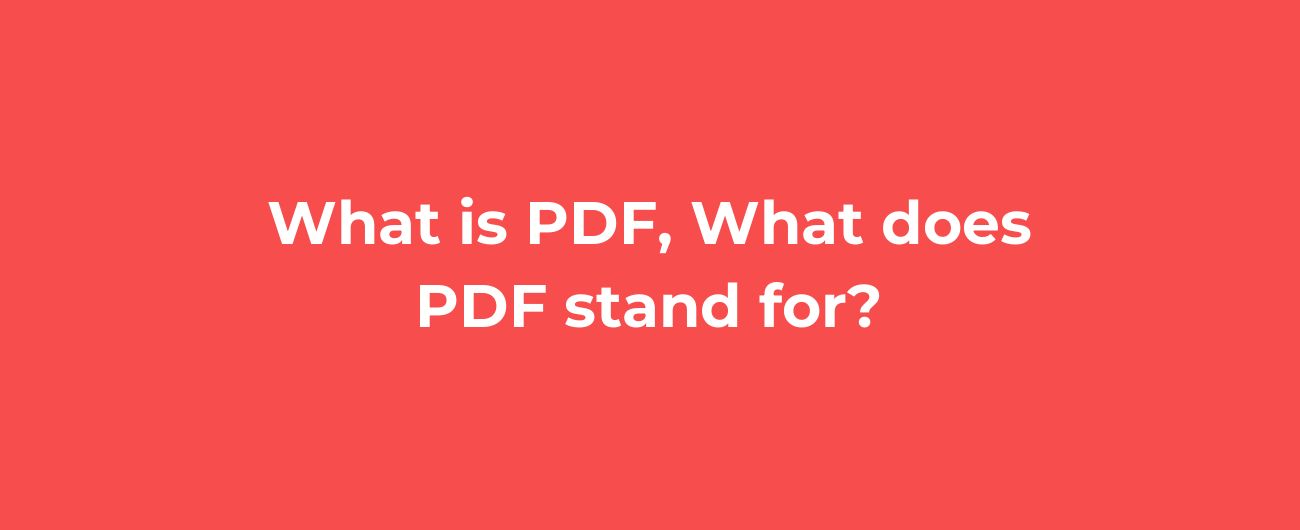
PDF, short for Portable Document Format, is a file format that has become widely used for document exchange due to its compatibility and reliability. Created by Adobe Systems in the early 1990s, PDF files are designed to preserve the formatting, fonts, images, and other elements of a document across different devices and operating systems. In this blog post, we will explore the ins and outs of PDF, its advantages, and its various applications. Whether you are a student, professional, or simply someone who frequently works with digital documents, understanding PDF and its features will undoubtedly enhance your productivity and efficiency. PDF stands for Portable Document Format. It is a file format that was developed by Adobe Systems in the early 1990s. The main purpose of PDF is to preserve the formatting and integrity of a document, regardless of the software, hardware, or operating system used to view or print it. PDF files are platform-independent, meaning they can be viewed and printed consistently across different devices and operating systems. PDF files can contain text, images, hyperlinks, interactive elements, and more. They are commonly used for documents such as reports, contracts, brochures, manuals, and ebooks. PDF has become a standard format for sharing and distributing documents electronically due to its reliability and compatibility. PDF files have a wide range of applications in various industries and sectors. Here are some common use cases: To create a PDF file, you can use various methods. Most word processors, such as Microsoft Word and Google Docs, have built-in options to save or export documents as PDF. Additionally, there are online converters and dedicated PDF creation software available. If you have a physical document, you can also use a scanner to convert it into a PDF file. Many modern printers also have the capability to scan and save documents as PDF directly. Opening a PDF file is simple. Most devices and operating systems have built-in PDF viewers, such as Adobe Acrobat Reader or Apple Preview. If you don't have a PDF viewer installed, you can download one for free from the official Adobe website or use alternative PDF readers available for your specific operating system. Yes, you can edit a PDF file, but the editing capabilities depend on the software you are using. Adobe Acrobat Pro is the most popular software for editing PDF files. It allows you to modify text, images, add or remove pages, annotate, and perform other editing tasks. There are also online PDF editors and other third-party software available for editing PDF files. Compressing a PDF file can help reduce its file size, making it easier to share or store. There are various online tools and software available that can compress PDF files without significant loss of quality. Adobe Acrobat Pro also provides options to optimize and reduce the file size of PDF documents. Yes, it is possible to convert a PDF file to another format. There are online converters and software available that can convert PDF to formats such as Microsoft Word, Excel, or PowerPoint. However, it's important to note that the conversion may not be perfect, and some elements of the original PDF may be lost or altered during the conversion process. Yes, PDF files can be made searchable. When creating a PDF, you have the option to include text recognition, also known as OCR (Optical Character Recognition). This allows the PDF viewer to recognize and search for specific words or phrases within the document. Yes, PDF files support digital signatures. Digital signatures provide a way to authenticate the integrity and authenticity of a document. They are commonly used for contracts, agreements, and other legal documents. Adobe Acrobat and other PDF software offer options to add digital signatures to PDF files. PDF files can be secured with various security features. You can set passwords to restrict access to the document, encrypt the content to prevent unauthorized modifications, and apply permissions to control what actions can be performed on the file. However, it's important to use strong passwords and follow best practices to ensure the security of your PDF files. Yes, PDF files can include multimedia elements such as videos, audio files, and interactive elements. However, the support for multimedia may vary depending on the PDF viewer or software used to open the file. It's important to test the compatibility of multimedia elements across different devices and platforms. While PDF is widely used and supported, there are alternative file formats available for specific purposes. Some alternatives include DOCX (Microsoft Word format), ODT (Open Document Text), and EPUB (ebook format). The choice of file format depends on the specific requirements and compatibility of the intended use case. PDF, short for Portable Document Format, is a versatile file format that has revolutionized document exchange and archiving. Its ability to preserve formatting, compatibility across different devices and operating systems, and extensive features make it an essential tool for individuals and organizations alike. Whether you need to share documents, create digital publications, or secure sensitive information, PDF provides a reliable and efficient solution. By understanding the basics of PDF and its applications, you can leverage its benefits to enhance your productivity and streamline your document workflows.What is PDF? What does PDF stand for?
Introduction
What is PDF?
Advantages of PDF
Applications of PDF
Common Questions about PDF
1. How do I create a PDF file?
2. How do I open a PDF file?
3. Can I edit a PDF file?
4. How do I compress a PDF file?
5. Can I convert a PDF file to another format?
6. Are PDF files searchable?
7. Can I add a digital signature to a PDF file?
8. How secure are PDF files?
9. Can I add multimedia elements to a PDF file?
10. Are there any alternatives to PDF?
Conclusion